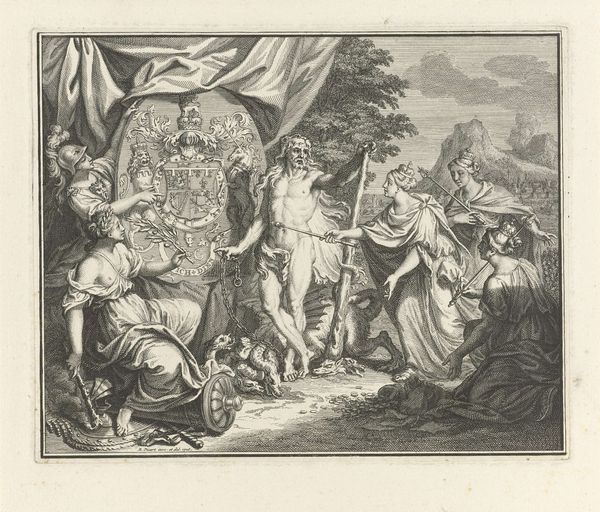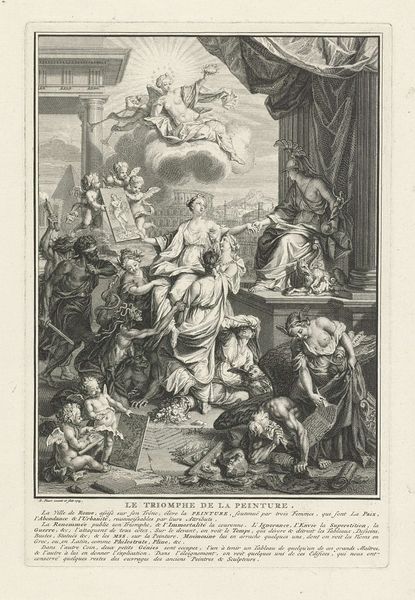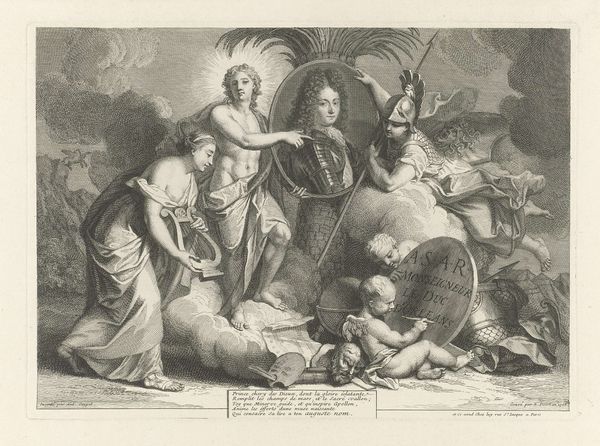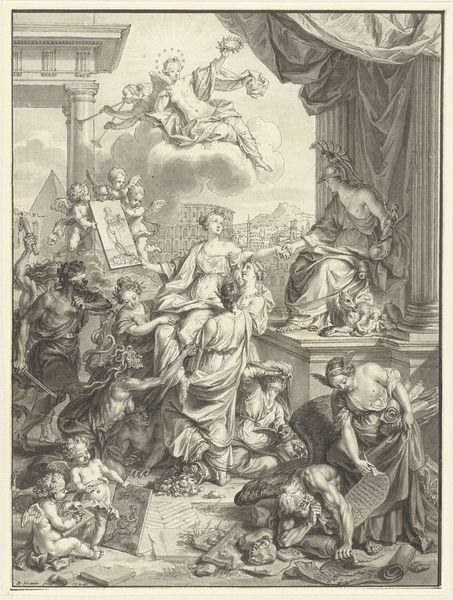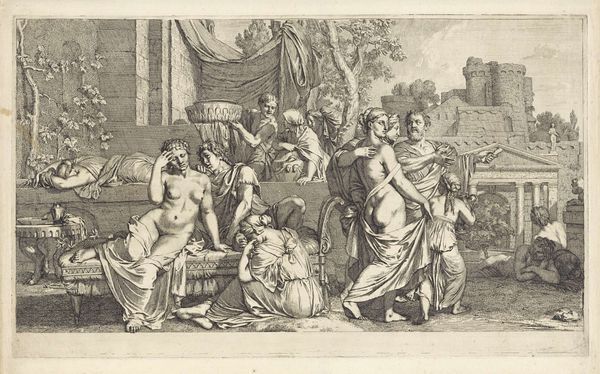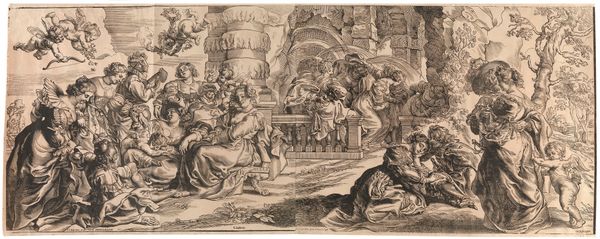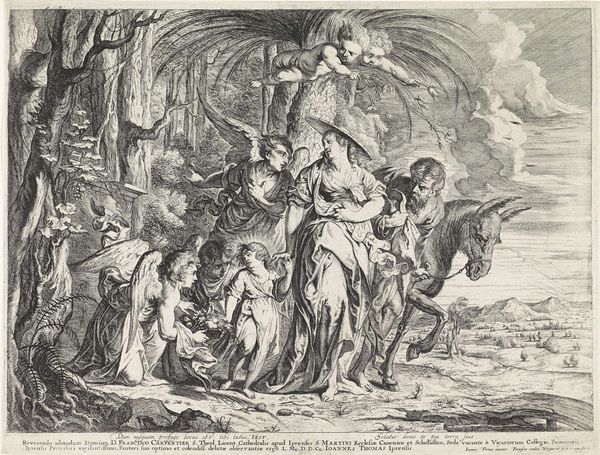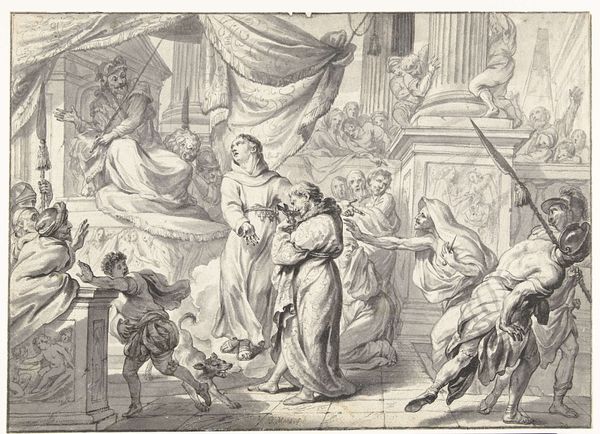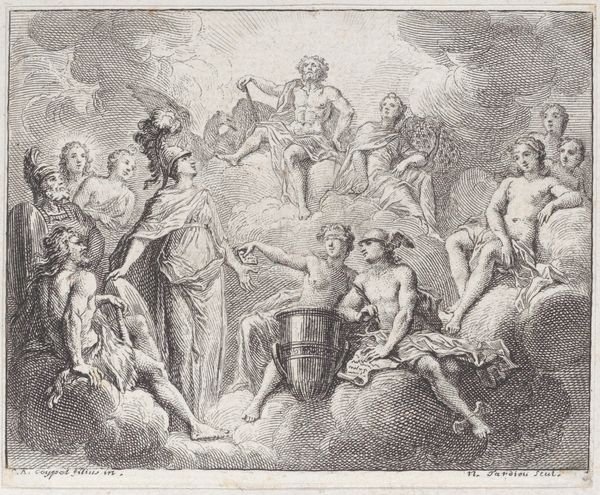
Amsterdamse Stedenmaagd omringd door wapenschilden van burgemeesters van Amsterdam 1719
0:00
0:00
bernardpicart
Rijksmuseum
drawing, print, ink, engraving
#
drawing
#
allegory
#
baroque
#
pen drawing
# print
#
ink
#
cityscape
#
history-painting
#
engraving
Dimensions: height 129 mm, width 209 mm
Copyright: Rijks Museum: Open Domain
Editor: Here we have Bernard Picart's 1719 engraving, "Amsterdamse Stedenmaagd omringd door wapenschilden van burgemeesters van Amsterdam," currently residing at the Rijksmuseum. The detail is astonishing! The allegorical figures and abundance of heraldry create a sense of civic pride, yet it's a bit overwhelming. How do you approach a piece so rich in symbolism? Curator: It's certainly a dense image. We need to unpack its socio-political function. Prints like this, especially during the Baroque period, were often commissioned to bolster the image of a city or its leaders. Who do you think the intended audience was? Editor: Perhaps wealthy merchants or city officials? Someone invested in Amsterdam's prosperity. Curator: Precisely. The virgin figure representing Amsterdam is surrounded by symbols of power and prosperity: a strong naval presence, wealth spilling from an urn, and shields representing influential figures. These are all strategic representations intended to project a particular narrative. How does that awareness of political strategy affect your perception of the work? Editor: It makes me question the underlying message. Is it genuine celebration or propaganda? The idealized figures and carefully arranged symbols feel… curated, I suppose. Curator: Exactly! And think about the role of printmaking itself. Engravings allowed for mass distribution. It wasn't just about artistic expression but also about controlling the narrative circulated about Amsterdam, both within the city and abroad. This print would have played a role in constructing and reinforcing a particular civic identity. Did Amsterdam live up to that ideal? Editor: That's a great point. Looking at it now, I see a carefully constructed piece of civic marketing rather than just a pretty picture. Understanding the intention changes everything. Curator: Indeed. It invites us to examine how images are used to shape public perception and reinforce power structures. We begin to analyze the ways in which art played a role in establishing Amsterdam as the great financial hub it once was. Editor: I will definitely look differently at images and think about who created it, when and why. Curator: That's the power of art history - seeing art in its context.
Comments
No comments
Be the first to comment and join the conversation on the ultimate creative platform.
